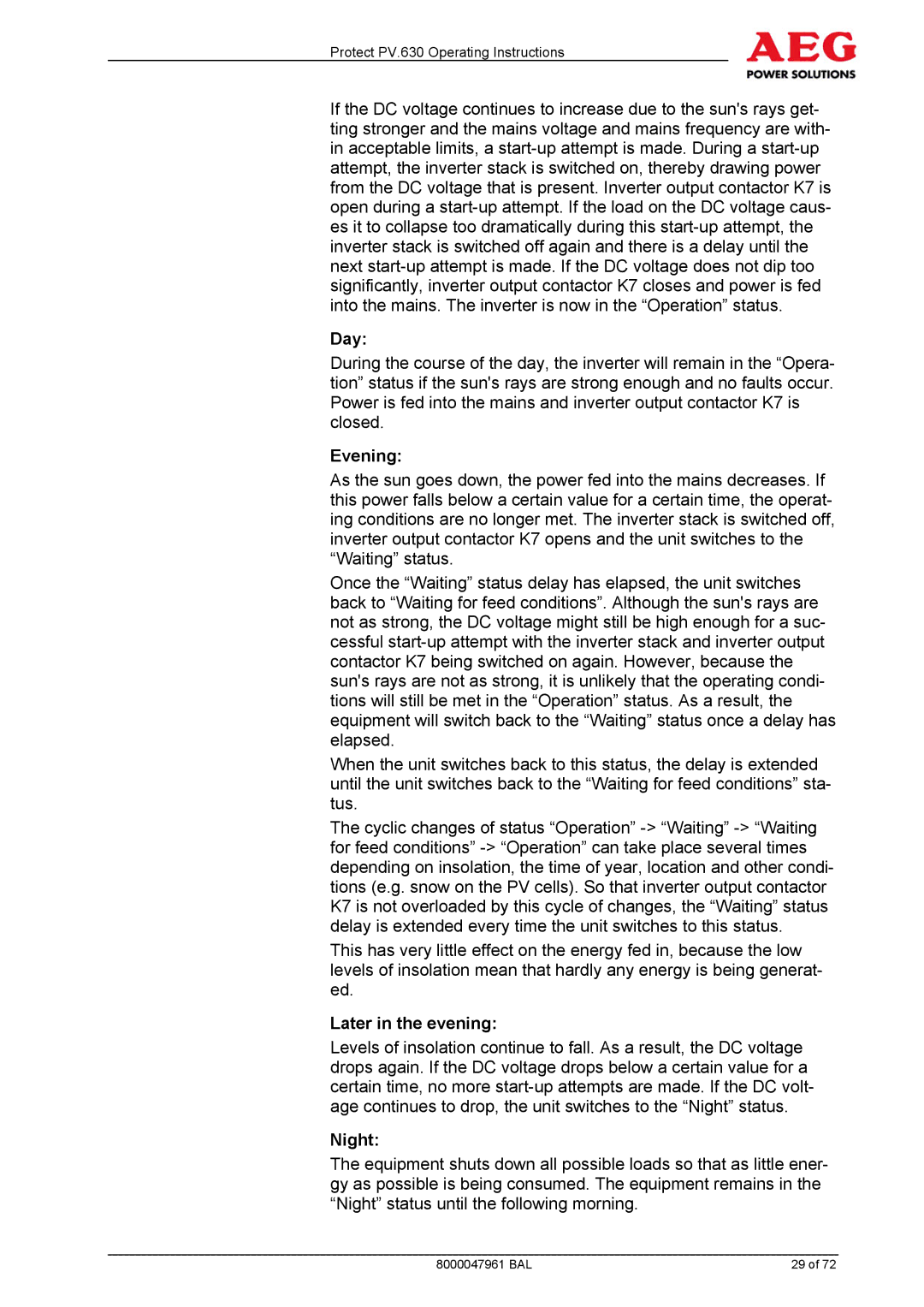
Protect PV.630 Operating Instructions
If the DC voltage continues to increase due to the sun's rays get- ting stronger and the mains voltage and mains frequency are with- in acceptable limits, a
Day:
During the course of the day, the inverter will remain in the “Opera- tion” status if the sun's rays are strong enough and no faults occur. Power is fed into the mains and inverter output contactor K7 is closed.
Evening:
As the sun goes down, the power fed into the mains decreases. If this power falls below a certain value for a certain time, the operat- ing conditions are no longer met. The inverter stack is switched off, inverter output contactor K7 opens and the unit switches to the “Waiting” status.
Once the “Waiting” status delay has elapsed, the unit switches back to “Waiting for feed conditions”. Although the sun's rays are not as strong, the DC voltage might still be high enough for a suc- cessful
When the unit switches back to this status, the delay is extended until the unit switches back to the “Waiting for feed conditions” sta- tus.
The cyclic changes of status “Operation”
This has very little effect on the energy fed in, because the low levels of insolation mean that hardly any energy is being generat- ed.
Later in the evening:
Levels of insolation continue to fall. As a result, the DC voltage drops again. If the DC voltage drops below a certain value for a certain time, no more
Night:
The equipment shuts down all possible loads so that as little ener- gy as possible is being consumed. The equipment remains in the “Night” status until the following morning.
8000047961 BAL | 29 of 72 |
